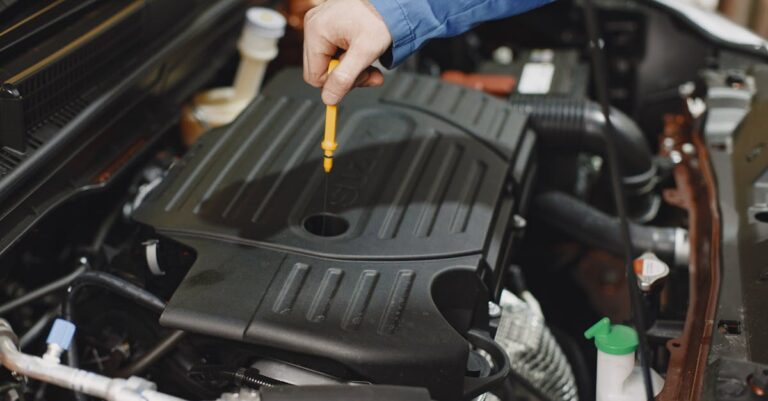Table of Content
- Changing A Flat Tire: Your Step by Step Guide to Getting Back on the Road
- Introduction: The Dreaded Flat But Don’t Panic!
- Safety First: Preparing for the Change
- Gathering Your Tools: What You’ll Need
- The Step by Step Process: Let’s Get Changing!
- Step 1: Secure the Vehicle (Parking Brake & Wheel Chocks)
- Step 2: Loosen the Lug Nuts (Before Jacking!)
Righty Tighty, Lefty Loosey Matters!
- Step 3: Position the Jack Correctly
Finding the Jack Points on Your Car
- Step 4: Raise the Vehicle
- Step 5: Remove the Lug Nuts and the Flat Tire
- Step 6: Mount the Spare Tire
- Step 7: Hand Tighten the Lug Nuts
- Step 8: Lower the Vehicle Carefully
- Step 9: Fully Tighten the Lug Nuts (Star Pattern!)
Why the Star Pattern is Crucial
- After the Change: Important Next Steps
- When NOT to Change a Tire Yourself
- Conclusion: You Did It! Confidence on the Road
- Frequently Asked Questions (FAQs)
Changing A Flat Tire: Your Step by Step Guide to Getting Back on the Road
Introduction: The Dreaded Flat But Don’t Panic!
Okay, let’s be real. Hearing that rhythmic thump-thump-thump or feeling that sudden pull to one side while you’re cruising down the road? It’s a feeling that sinks your stomach faster than a leaky boat. A flat tire! It’s inconvenient, it’s annoying, and it always seems to happen at the worst possible moment, right? Maybe you’re late for work, heading out on a road trip, or just trying to get home after a long day. But here’s the good news: while it’s definitely a hassle, changing a flat tire is something most people can absolutely handle themselves. You don’t need to be a master mechanic or possess superhuman strength. All you really need is a little know how, the right tools (which hopefully came with your car!), and a calm approach. Think of it like learning to tie your shoes – seems tricky at first, but once you get the hang of it, it’s second nature. This guide is here to walk you through every single step, making the process as painless and straightforward as possible. We’ll cover everything from finding a safe spot to getting that spare on securely, so you can ditch the stress and get back on your way with confidence. Ready to empower yourself?
Safety First: Preparing for the Change
Before you even think about grabbing that lug wrench, the absolute, non negotiable first priority is SAFETY. Seriously, changing a tire on the side of the road can be dangerous if you’re not careful. Cars whizzing by, uneven ground, poor visibility – these are all potential hazards. Your well being is far more important than getting that tire changed quickly. So, take a deep breath and focus on creating a safe environment first.
Finding a Safe Spot to Pull Over
The moment you realize you have a flat, don’t just slam on the brakes and stop right where you are, especially if you’re on a busy highway or a narrow road. Signal your intention to pull over and gently steer your vehicle as far off the road as possible. Look for a level, stable surface – ideally, the shoulder of the road, a parking lot, or a quiet side street. Avoid stopping on soft ground (like mud or loose gravel) because the jack might sink or become unstable. Also, try to avoid stopping on a curve or hill where visibility for other drivers is limited. Finding a spot with a straight stretch of road behind and in front of you is ideal. Give yourself plenty of room away from traffic – the further, the better. Every extra foot of space is an added layer of safety between you and passing vehicles.
Alerting Other Drivers (Hazards & Safety Gear)
Once you’ve found a relatively safe spot, you need to make sure other drivers know you’re there and that you’re stationary. Immediately turn on your hazard lights (your emergency flashers). This is the universal signal for “caution, vehicle stopped ahead.” If it’s dark, raining, or foggy, visibility is even more crucial. If you have reflective triangles or flares in your emergency kit (and you really should!), now is the time to use them. Place one triangle or flare about 50-100 feet behind your vehicle and another one further back if you’re on a high speed road or curve. This gives oncoming drivers ample warning to slow down and move over. Consider wearing a high visibility vest if you have one, especially at night. Anything you can do to make yourself and your vehicle more visible significantly increases your safety.
Gathering Your Tools: What You’ll Need
Alright, you’re safely off the road, and other drivers are aware of your presence. Now it’s time to gather your tire changing arsenal. Most vehicles come equipped with the basic tools you need, but knowing where they are and what they look like is key. Don’t wait until you have a flat to figure this out – take a few minutes sometime to locate these items in your car.
Locating Your Spare Tire
The spare tire isn’t always in the most obvious place. The most common location is in the trunk, under the floor panel. However, in some vehicles, especially trucks and SUVs, it might be mounted underneath the rear of the vehicle, on the tailgate, or even in the engine compartment (though that’s less common nowadays). Check your owner’s manual – it’s your best friend in this situation! It will show you exactly where the spare is stored and how to access it. You might need to remove some cargo or lift a cover. Get the spare tire out and place it near the flat tire.
Finding the Jack and Lug Wrench (Tire Iron)
Along with the spare tire, you should find a jack and a lug wrench (often called a tire iron). These are usually stored together, perhaps in a compartment near the spare or clipped somewhere in the trunk. Again, your owner’s manual is the definitive guide. The jack is the tool used to lift the car off the ground, and the lug wrench is used to remove and tighten the lug nuts (the big bolts holding the wheel onto the car). Familiarize yourself with how they operate. Does the jack have a handle you need to assemble? Does the lug wrench fit the nuts on your wheels properly?
Understanding Different Jack Types
Not all car jacks are created equal. The most common type supplied with vehicles is the scissor jack. It works by turning a screw thread, which expands the diamond shaped mechanism, lifting the car. They’re compact but can sometimes require a bit of effort to crank. Some larger vehicles might come with a bottle jack, which uses hydraulic pressure and is often easier to operate but needs to be placed very precisely. Knowing which type you have helps you understand how to use it safely and effectively. Your owner’s manual will explain the specifics for your particular jack.
Optional but Helpful Extras (Gloves, Wheel Chocks, Flashlight)
While the spare, jack, and wrench are the essentials, a few extra items can make the job safer and easier. A pair of sturdy gloves will keep your hands clean and protect them from scrapes. Wheel chocks (small wedges placed behind the wheels) provide extra security to prevent the car from rolling, especially if you’re on a slight incline. A flashlight (even during the day) is invaluable for seeing under the car to position the jack correctly or find dropped lug nuts. A small block of wood can provide a stable base for the jack on softer ground. Consider putting together a small roadside emergency kit with these items – future you will be very grateful!
The Step by Step Process: Let’s Get Changing!
Okay, safety checks done, tools gathered – it’s showtime! Let’s break down the actual tire changing process into manageable steps. Remember, take your time and follow the sequence.
Step 1: Secure the Vehicle (Parking Brake & Wheel Chocks)
Even if you think you’re on level ground, always engage the parking brake (also called the emergency brake or handbrake) firmly. This helps prevent the car from rolling unexpectedly while it’s jacked up. If you have wheel chocks, place them securely against the tire diagonally opposite the one you’re changing. For example, if you’re changing the front right tire, chock the rear left tire (place one chock in front of it and one behind it for maximum security). If you don’t have chocks, you can use sturdy rocks or blocks of wood as a last resort, but proper chocks are much safer.
Step 2: Loosen the Lug Nuts (Before Jacking!)
This is a crucial step that often gets missed: loosen the lug nuts before you lift the car. Why? Because if you try to loosen them when the wheel is in the air, the wheel will just spin freely, and you won’t be able to get enough leverage. Use the lug wrench to turn each lug nut counter clockwise (remember: lefty loosey). You might need to put some muscle into it, especially if they were tightened securely last time. Use your body weight if necessary, but be careful not to strip the nuts or lose your balance. Don’t remove the nuts completely yet – just loosen them about half a turn to a full turn each. This breaks the initial resistance while the weight of the car is still holding the wheel steady.
Righty Tighty, Lefty Loosey Matters!
It sounds simple, but in a slightly stressful situation, it’s easy to forget! Turning the lug nuts the wrong way (clockwise) will only tighten them further, making your job much harder. Always turn counter clockwise to loosen. Imagine you’re unscrewing the lid off a jar. Same principle!
Step 3: Position the Jack Correctly
Now it’s time to introduce the jack. Placing the jack in the wrong spot is not only ineffective but can also seriously damage your car’s frame or underbody components. Cars have specific reinforced points on the frame designed to support the vehicle’s weight safely when using a jack.
Finding the Jack Points on Your Car
Consult your owner’s manual! It will show diagrams indicating the precise jack points, usually located on the metal frame rail running underneath the car, near the wheel well you’re working on. There might be notches, arrows, or reinforced areas specifically marked. Look carefully under the car (this is where that flashlight comes in handy) to identify the correct spot. Position the jack directly under this point. Make sure the jack head is properly seated against the frame.
Step 4: Raise the Vehicle
Slowly and steadily operate the jack according to its type (cranking the scissor jack handle or pumping the bottle jack lever). Raise the vehicle until the flat tire is completely off the ground – you’ll need enough clearance (a few inches) to easily remove the flat and mount the slightly larger (because it’s inflated!) spare. Keep an eye on the jack and the car as you lift. Make sure the jack remains vertical and stable. If it starts to tilt or looks unstable, stop immediately, carefully lower the car, reposition the jack, and try again. Never, ever put any part of your body under the vehicle while it’s supported only by the jack.
Step 5: Remove the Lug Nuts and the Flat Tire
Now that the wheel is off the ground, you can finish unscrewing the lug nuts you loosened earlier. Turn them counter clockwise by hand until they come off completely. It’s a good idea to put them somewhere safe immediately – like your pocket, a hubcap placed upside down, or a specific spot on the ground where they won’t roll away. Once all the lug nuts are off, grasp the flat tire firmly with both hands (at the 10 and 2 o’clock positions, like a steering wheel) and pull it straight towards you, off the threaded wheel studs. Tires can be surprisingly heavy and awkward, so get a good grip. Lay the flat tire flat on the ground under the vehicle’s frame near the jack as an extra safety precaution. If the jack were to fail, the car would land on the old wheel rather than directly on the ground (or worse!).
Step 6: Mount the Spare Tire
Lift the spare tire and align the holes in the center of the wheel with the protruding wheel studs on the hub. This can sometimes be tricky, especially aligning the top hole first can help. Push the spare tire firmly onto the studs until it sits flush against the mounting surface (the brake rotor or drum). It might take a little wiggling to get it seated properly.
Step 7: Hand Tighten the Lug Nuts
Take the lug nuts you safely stowed away and thread them back onto the studs by hand, turning them clockwise (righty tighty!). Tighten them as much as you can by hand. This ensures the wheel is seated evenly before you start using the wrench. Hand tightening first helps prevent cross threading the nuts, which can cause serious damage.
Step 8: Lower the Vehicle Carefully
Slowly and carefully lower the vehicle by reversing the jacking procedure (turning the scissor jack screw counter clockwise or opening the release valve on a bottle jack). Lower it until the spare tire is resting firmly on the ground and the jack is no longer supporting the car’s weight. Remove the jack from underneath the vehicle.
Step 9: Fully Tighten the Lug Nuts (Star Pattern!)
Now that the wheel is on the ground and bearing weight, you need to fully tighten the lug nuts with the wrench. Don’t just tighten them one after another in a circle! This is super important: tighten the lug nuts in a star or crisscross pattern. If you have five nuts, tighten one, then skip one and tighten the next, then skip one, and so on, until they are all tight. For four nuts, tighten opposites. Use the wrench and put some firm pressure on it – they need to be secure. Go around the pattern a couple of times to ensure they are all equally tight.
Why the Star Pattern is Crucial
Tightening in a star pattern ensures the wheel is drawn evenly against the hub. If you tighten them in a circle, you risk warping the wheel or brake rotor because the pressure isn’t applied uniformly. This even pressure is vital for safety and prevents the wheel from wobbling or potentially coming loose while you drive. It might seem like a small detail, but it’s a critical one for ensuring the wheel is mounted correctly and securely.
After the Change: Important Next Steps
Woohoo! The spare is on, and the flat is off. You’ve done the hard part, but don’t just jump in and speed off yet. There are a few crucial follow up steps to ensure everything is truly sorted.
Checking Spare Tire Pressure
Spare tires, especially the compact “donut” types, often require higher inflation pressure than regular tires (check the sidewall of the spare or your owner’s manual). They can also lose pressure over time just sitting in the trunk. Before you drive too far, or ideally right after changing the tire if you have a portable pump or are near a gas station, check the spare’s pressure and inflate it to the recommended PSI. Driving on an underinflated spare is dangerous and defeats the purpose!
Stowing Your Flat Tire and Tools
Gather up the flat tire, the jack, the lug wrench, and any wheel chocks or other tools you used. Put the flat tire where the spare was (it might not fit perfectly, especially if it’s a full size flat replacing a donut spare, but secure it as best you can). Make sure the jack and wrench are properly stowed so they don’t rattle around or become projectiles in case of a sudden stop. Clean up any mess you made.
Getting Your Flat Tire Repaired or Replaced ASAP
This is probably the most important post change step. Your spare tire, particularly if it’s a temporary donut, is not meant for long term use. It’s a temporary solution to get you to a safe place or a tire shop. Drive cautiously (observing the speed and distance limits typically indicated on the spare’s sidewall – often no more than 50 mph and 50 miles). Head straight to a qualified tire repair shop. They can assess the damage to your flat tire. Sometimes, a simple puncture can be repaired safely and inexpensively. Other times, especially if the sidewall is damaged or the puncture is too large, the tire will need to be replaced. Don’t delay this step – driving on a spare for too long compromises your vehicle’s handling, braking, and overall safety.
Understanding Spare Tire Limitations (Donuts vs. Full Size)
It’s important to know what kind of spare you have. Many modern cars come with a compact temporary spare, often called a “donut.” These are smaller, lighter, and have significant limitations on speed (usually max 50 mph) and distance (usually max 50-70 miles). They are purely designed to get you to a repair facility. Some vehicles, especially trucks and older cars, might have a full size spare that matches the other tires. While this is better, it might still be a different brand or have different wear, so it’s still wise to get your original tire repaired or replaced and the spare checked and put back into storage.
When NOT to Change a Tire Yourself
While knowing how to change a tire is a valuable skill, there are times when it’s safer or more practical to call for professional help (like a roadside assistance service). Don’t attempt the change if:
- You feel unsafe due to heavy traffic, poor visibility, or the location (e.g., narrow shoulder on a busy highway). Your safety comes first.
- You are physically unable to perform the steps (lifting the tire, loosening tight nuts).
- The ground is unstable, soft, or steeply sloped, making jacking unsafe.
- You don’t have the necessary tools (missing jack, wrench, or functioning spare).
- The lug nuts are impossibly tight, rusted, or stripped.
- You suspect damage to the wheel itself, not just the tire.
There’s no shame in calling for help. Roadside assistance services exist for exactly these situations.
Conclusion: You Did It! Confidence on the Road
See? You faced the flat tire beast and conquered it! Changing a tire might seem daunting, but by following these steps carefully and prioritizing safety, you’ve proven you can handle this common roadside hiccup. It’s more about process and patience than brute strength. Knowing you have this skill in your back pocket brings a huge sense of relief and confidence when you’re behind the wheel. Remember to check your spare tire’s pressure periodically, ensure your tools are always in the car, and maybe even do a practice run in your driveway sometime. Now, get that flat fixed or replaced, and drive on knowing you’re prepared for (almost) anything the road throws your way!
Frequently Asked Questions (FAQs)
FAQ 1: How long can I drive on a spare tire?
It depends heavily on the type of spare. If it’s a compact temporary spare (“donut”), you should strictly adhere to the limitations printed on its sidewall – typically no more than 50 mph and for a distance of 50 to 70 miles. It’s designed only to get you to a tire shop. If you have a full size matching spare, you technically don’t have the same strict limits, but it’s still recommended to get your primary tire repaired or replaced and the spare checked as soon as possible, as it might have different wear or age.
FAQ 2: What if my lug nuts are stuck?
Stuck lug nuts are frustrating! First, ensure you’re turning the wrench counter clockwise (lefty loosey). You can try applying steady pressure with your foot on the wrench handle (be careful not to slip!). A penetrating oil spray (like WD 40 or PB Blaster) applied around the nuts and allowed to soak for a few minutes can sometimes help loosen rust or corrosion. If they still won’t budge, or if you feel you might strip them, it’s best to call for roadside assistance rather than risk breaking a stud.
FAQ 3: Where is the best place to store my jack and wrench?
Keep them in the designated storage location specified in your owner’s manual. This is usually near the spare tire in the trunk or under the vehicle. These spots often have specific compartments or clips designed to hold the tools securely, preventing them from rattling or becoming dangerous projectiles during driving or in an accident. Don’t store them loosely in the cabin or trunk.
FAQ 4: Should I use a torque wrench?
While the lug wrench provided with your car is sufficient for a roadside change, using a torque wrench is the ideal way to tighten lug nuts. Overtightening can warp rotors or damage studs, while under tightening can lead to the wheel coming loose. A torque wrench allows you to tighten the nuts to the precise specification listed in your owner’s manual (measured in foot pounds or Newton meters). If you don’t have one for the roadside change, tighten them firmly with the lug wrench in the star pattern, and then have a mechanic check the torque settings as soon as possible when you get the flat tire repaired/replaced.
FAQ 5: What if I don’t have a spare tire?
Increasingly, some newer cars don’t come with a spare tire to save weight and space. Instead, they might be equipped with a tire inflation kit (sealant and a small compressor) or run flat tires. Familiarize yourself with what your car has. Inflation kits can temporarily seal small punctures, allowing you to drive slowly to a repair shop. Run flat tires are designed to be driven on for a limited distance (like 50 miles) at reduced speed even after losing all air pressure. If you have neither and get a flat, your only option is to call for roadside assistance or a tow truck.









